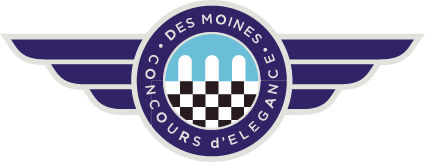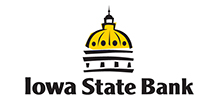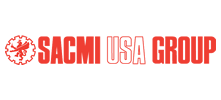2015 Des Moines Concours D’elegance: In The Shadow Of The Father Of The Used Car Trade
July 8, 2015
July 8, 2015
Raise the name “Cunningham” among members of the Classic Car Club of America and wait for the response. Roughly sixty percent will shrug their shoulders. Perhaps twenty percent, comprised primarily of Baby Boomers, may wax on about West Palm Beach racing legend Briggs Cunningham who, in the early 1950s produced his venerable Cunningham racers and road cars. Another twenty percent, likely from the elder G.I. Generation, may recite tales of James Cunningham, Son and Company, manufacturers of fine quality horse-drawn carriages. In 1908, the latter expanded to produce high-end, conservatively styled limousines, commercial cars and military vehicles. Few members, if any, would mention William Royce Cunningham, the long-forgotten Father of the Used Car Trade.
Born in Burlington, Wisconsin in 1871, William Cunningham managed a creamery there before seeking his fortune as a horse trader with the Chicago stockyards. He came to Iowa in 1892 to visit a brother and never returned. In 1900, he married in nearby Storm Lake and opened an agricultural implement business. Five years later, he opened his first automobile garage, handling a variety of makes and specializing in the economical Jackson.
Cunningham soon realized that dealers across the country were unable to sell their quotas of new cars. “I told my wife that I could make a killing if she’d go to a larger city with me,” Cunningham recalled after his retirement in 1935. “She said she’d go to Des Moines.” So, in 1910, the Cunninghams moved 150 miles southeast. They opened the Cunningham Auto Clearing House at 1017 Walnut Street.
Des Moines’ automotive legacy
At the turn of the century, a hotbed of transportation technology existed near the fork of the Des Moines and Raccoon Rivers. Enterprises were haphazardly scattered across the business district. In 1887, Scottish-born chemist William Morrison had developed America’s first electric car in a secret laboratory under the Victoria Hotel on Fifth Street. Nearby, small shops had produced horseless carriages and chug buggies with various name plates including Desmoines, Eldridge, Monarch and Wells. In 1906, brothers Fred and August Duesenberg assembled their first car—a Mason—in a blacksmith shop and established the Duesenberg Motor Company a few years later.
The automotive entrepreneurs were especially attracted to an unpaved, undeveloped real estate district two miles west of the Capitol building, soon to be known as “Auto Row”. There, within the borders of Walnut Street and Grand Avenue between 10th and 17th, they easily demonstrated and repaired their machines. New showrooms included broad expanses of mosaic floors, pillarless truss roofs, and large plate glass windows and garage-style doors. Many dealerships incorporated ramps or elevators to a second-floor showroom.
At the time, new-car prices were determined by manufacturers, just as they are today. But there was no “Kelley Blue Book” to establish the value of second-hand machines. So Cunningham convinced the Auto Row dealers to ask him how much to allow for their trades. “I didn’t think the term ‘second-hand car’ sounded very appealing, so I started adopting the term ‘used car’,” Cunningham said, “and people have used it ever since.”
In 1915, Iowa led the nation in the proportion of automobiles to population with 145,134 vehicles on the road. To support the demand, a vibrant sales and service industry rapidly emerged in downtown Des Moines. The city’s car dealerships, which totaled just 16 in 1908, had blossomed to 36. Cunningham claimed to have appraised 84 different makes, including Aerocar, Autocar, Brooks, Brush, Cameron, Duer, Dolson, Fuller, Herreshoff, Holmes, Marvel, Meteor, Nyberg, Sampson, Schacht, Thomas and Wayne.
“From the Des Moines office, I sold automobiles all over the nation,” he said. “I’d buy up the stocks of cars which dealers couldn’t sell, and I got most of them at a pretty reasonable price. Des Moines dealers were very kind to me.” Then he grinned and said, “Tried not to sell a ‘runabout’…that’s a car that would ‘run about’ a block before breaking down!”
By 1935, William Cunningham retired to rural Storm Lake where he died in 1953. The Duesenbergs had also moved on, relocating first to St. Paul, Minnesota, and then to Indianapolis to fame and fortune. But the citizens of Des Moines never forgot them. In 1997, a commemorative plaque was installed at 915 Grand Avenue on the site of the Duesenberg’s shop. It now marks the northeast entrance to the new “Western Gateway,” which includes the picturesque John and Mary Pappajohn Sculpture Park.
Although the Cunningham Auto Clearing House was dismantled decades ago, the proprietor would feel right at home. In his shadow has emerged one of the most elegant displays of “used cars” in the Midwest—the annual Des Moines Concours d’Elegance.
For more information on the 2015 Des Moines Concours d’Elegance visit www.DesMoinesConcours.com.
— 30 —
Original content copyrighted and contributed by Robert D. Cunningham, June 30, 2015.



























